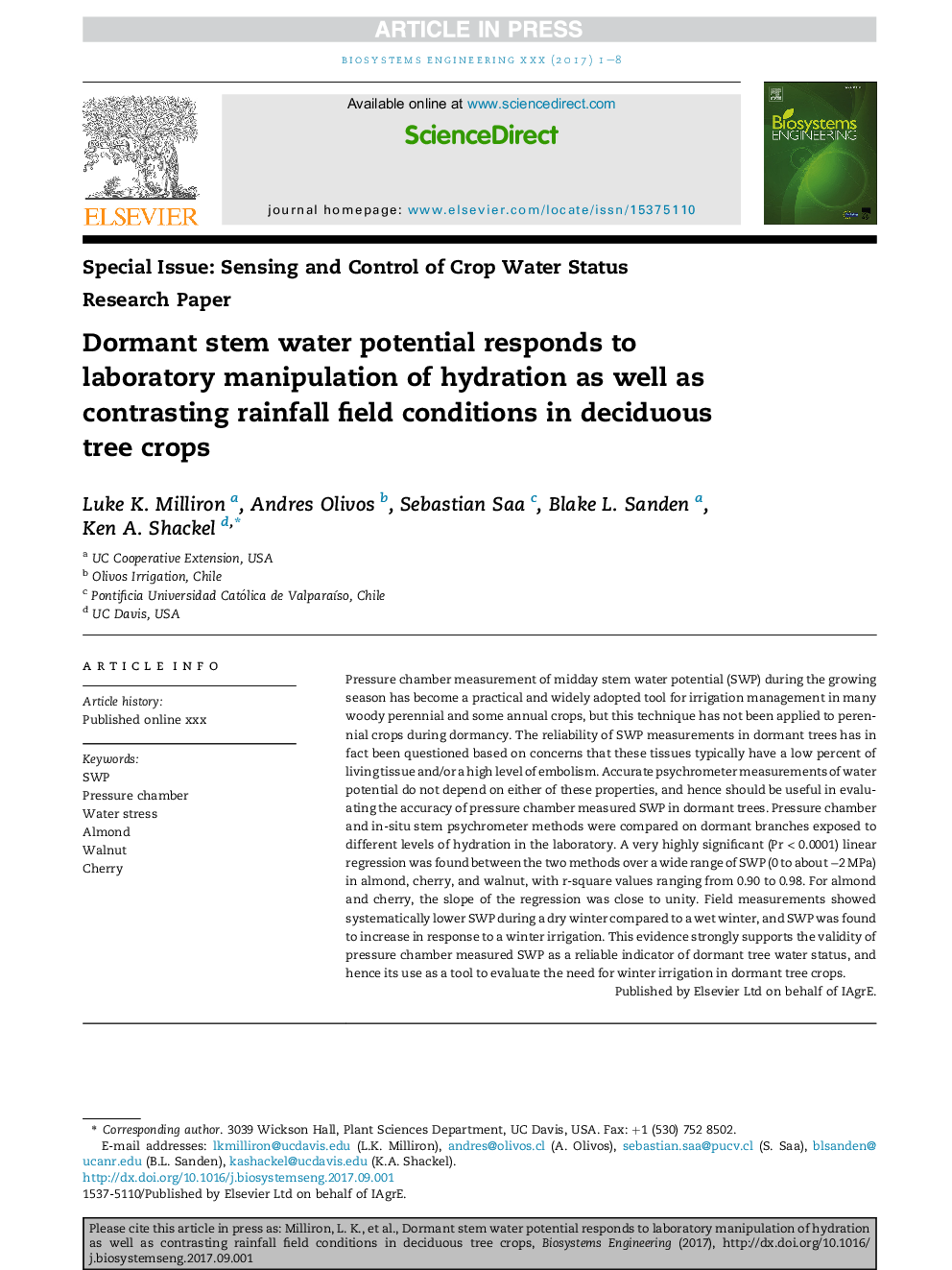| Article ID | Journal | Published Year | Pages | File Type |
|---|---|---|---|---|
| 8054872 | Biosystems Engineering | 2018 | 8 Pages |
Abstract
Pressure chamber measurement of midday stem water potential (SWP) during the growing season has become a practical and widely adopted tool for irrigation management in many woody perennial and some annual crops, but this technique has not been applied to perennial crops during dormancy. The reliability of SWP measurements in dormant trees has in fact been questioned based on concerns that these tissues typically have a low percent of living tissue and/or a high level of embolism. Accurate psychrometer measurements of water potential do not depend on either of these properties, and hence should be useful in evaluating the accuracy of pressure chamber measured SWP in dormant trees. Pressure chamber and in-situ stem psychrometer methods were compared on dormant branches exposed to different levels of hydration in the laboratory. A very highly significant (Pr < 0.0001) linear regression was found between the two methods over a wide range of SWP (0 to about â2 MPa) in almond, cherry, and walnut, with r-square values ranging from 0.90 to 0.98. For almond and cherry, the slope of the regression was close to unity. Field measurements showed systematically lower SWP during a dry winter compared to a wet winter, and SWP was found to increase in response to a winter irrigation. This evidence strongly supports the validity of pressure chamber measured SWP as a reliable indicator of dormant tree water status, and hence its use as a tool to evaluate the need for winter irrigation in dormant tree crops.
Related Topics
Physical Sciences and Engineering
Engineering
Control and Systems Engineering
Authors
Luke K. Milliron, Andres Olivos, Sebastian Saa, Blake L. Sanden, Ken A. Shackel,
